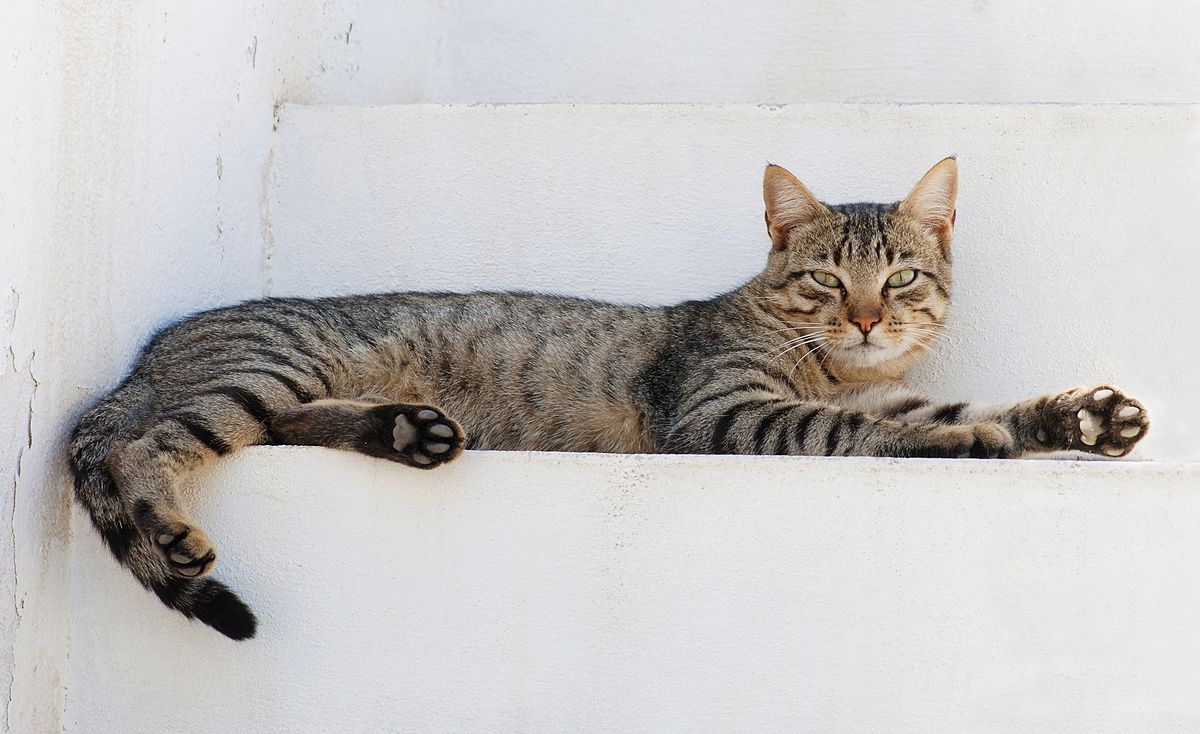Stray cats typically live for about 2 to 5 years. Outdoor hazards often reduce their lifespan.
Stray cats, or feral cats, face numerous challenges that significantly shorten their life expectancy compared to domesticated indoor cats. The harsh reality of life on the streets means they are constantly at risk from traffic, disease, weather extremes, and potential human cruelty.
These cats must fend for themselves, finding food, shelter, and avoiding predators without human assistance. Their survival often hinges on their ability to adapt quickly and the resources available in their environment. Efforts like Trap-Neuter-Return (TNR) programs can help manage stray cat populations and potentially improve their quality of life. Understanding the plight of these animals is crucial for communities to create effective strategies to care for and control their populations responsibly.
Stray Cats Versus House Cats
Imagine two feline worlds: one filled with cozy beds, regular meals, and occasional vet visits, the other a rough urban jungle or quiet rural existence. These worlds belong to house cats and stray cats, each facing different challenges. Understanding the life of a stray cat compared to a pampered pet cat opens our eyes to why their lifespans differ so greatly.
Life Expectancy Differences
Numerous factors dictate how long cats live, with living conditions topping the list. House cats often enjoy a longevity ranging from 12 to 20 years, some even hitting the mid-20s. Their stray counterparts, on the other hand, face a sharper reality: most stray cats live a mere 2 to 5 years. These figures reveal a substantial gap, prompting us to look closer at why this is the case.
- Access to food and water
- Shelter and comfort
- Regular medical care
Impact Of Environment On Health
The environment plays a crucial role in the health and longevity of stray cats. Let’s delve into the specifics:
| Factor | House Cats | Stray Cats |
|---|---|---|
| Food | Consistent, nutritious | Unpredictable, scavenged |
| Shelter | Warm, safe | Exposed, dangerous |
| Healthcare | Regular, preventive | Rare, emergency |
| Dangers | Minimal | High (vehicles, predators) |
Diseases pose a significant threat to stray cats, often going unnoticed and untreated. Malnutrition, accidents, and harsh weather further compound their hardships. Without a guardian to provide, stray cats lead a vulnerable existence.
Factors Affecting Stray Cat Longevity
The life of a stray cat can be like a puzzle with missing pieces. Many factors play a role in how long these feline adventurers survive in the wild. Let’s explore these factors in detail, shedding light on the challenges they face and the elements that can tip the scales in their favor.
Diet And Nutrition
Proper nourishment is the cornerstone of any cat’s health. Stray cats often rely on a mix of scavenging, hunting, and occasional feedings from kind humans. The quality of this diet vastly influences their health and life expectancy.
- Protein-rich foods support muscle maintenance and immune system.
- A lack of vital nutrients can lead to disease and reduced lifespan.
- Access to clean water is essential to prevent dehydration and kidney problems.
Threats In The Urban Jungle
Stray cats navigate a world filled with perils. The urban environment poses specific threats to their well-being.
- Traffic accidents are common and can be fatal.
- Predators and other cats may cause injuries or spread disease through fights.
- Extreme weather conditions can lead to sickness or worse.
Access To Veterinary Care
Medical attention can make a significant difference. Stray cats seldom receive vaccines, routine check-ups, or treatment for injuries and illnesses. This distinctly limits their odds of survival.
| Without Care | With Care |
|---|---|
| Proliferation of parasites | Parasite control |
| Untreated wounds | Wound care and antibiotics |
| Reproductive complications | Spaying/neutering |
The Struggle For Survival
The life of a stray cat teems with trials at every turn. Not bound by the walls of a loving home, these feline wanderers must navigate a world fraught with danger. Their survival hinges on cunning, speed, and sheer will. Yet, the question looms – how long can a stray cat beat the odds in the wild?
Territorial Battles
Stray cats fiercely protect their turf. They roam lands rife with rivals eyeing the same scarce resources. Claws clash and fur flies as they battle for control. These fights can shorten their lifespans drastically. Wounds suffered in these skirmishes often lead to:
- Deep cuts that can become infected
- Lameness or impaired mobility
- Drain on energy and resources for healing
Each contested alley or backyard may mark an invisible grave, where a defender’s reign ends.
Weather And Climate Challenges
The mercy of Mother Nature is often withheld from the homeless cat. Exposed to the elements, stray cats face:
- Extreme heat that can lead to dehydration
- Bitter cold, a menace to their frail bodies
- Relentless rain, leaving them vulnerable to hypothermia
Survival seasons shift, and not all make it through this relentless cycle.
Disease And Injury
Without the care of a vet, untreated ailments diminish a stray’s nine lives. They confront a catalogue of conditions:
| Ailment | Effect on Lifespan |
|---|---|
| Feline leukemia | Severely shortened |
| Parasite infestations | Compromised health |
| Untreated injuries | Increased risk of death |
Injury compounds disease, leading to a grim outcome for the stray.
Human Interaction
The lives of stray cats can change with human interaction. People can have huge impacts on these feline lives. From feeding habits to healthcare, human actions play a key role. In this part of our discussion, we investigate how these factors influence the lifespan of stray cats.
The Role Of Feeding
Regular feeding can greatly extend a stray cat’s life. When humans provide food, cats get better nutrition. This can lead to stronger immune systems and better health. Here’s how feeding affects stray cats:
- Better nutrition leads to fewer illnesses.
- Cats with regular food sources avoid risky scavenging.
- Feeding spots can become safe havens for strays.
Spaying And Neutering Effects
Spaying and neutering stray cats have lasting benefits. These procedures lead to healthier lives and fewer kittens. Spayed or neutered strays tend to live longer because:
- They are less likely to roam and face dangers.
- They have lower risks of certain diseases.
- They are less prone to engage in fights.
Rescue And Adoption
Rescue and adoption transform stray cats’ lives. Cats that find homes get care and love. They leave the dangers of the streets behind. With adoption, cats enjoy:
- Regular veterinary care for a healthy life.
- A cozy environment safe from predators and weather.
- Long-term companions, both humans and pets.
Understanding Through Research
Learning about stray cats helps us care for them better. Research on their lifespans offers insights into their world. Such studies pave the way for improved welfare and policies for these elusive creatures.
Studies On Feral Cat Colonies
Scientists study feral cats to understand their lives. Research on colonies reveals life expectancy and challenges. Feral cats live tough lives, with shorter lifespans compared to house cats. Let’s examine findings from such studies.
- Colony size and its effects on survival
- Impact of environment and food sources
- Role of human intervention in their lifespan
Table 1. Studies on Lifespan of Feral Cats in Colonies
| Study | Average Lifespan | Key Factors Affecting Lifespan |
|---|---|---|
| Urban Feral Cat Project | 3-5 years | Food scarcity, diseases, human activities |
| Rural Feral Cat Study | 4-6 years | Predation, harsh weather, limited shelter |
Tracking And Monitoring Programs
Tracking programs play a crucial role. They provide real-time data on stray cats’ movements and health. With GPS collars and microchips, researchers gain vital information on how long stray cats live.
- GPS tracking reveals travel patterns and habitats
- Microchip scans at shelters help monitor health trends
- Data helps develop effective support strategies for strays
Rigorous monitoring of stray cats enables targeted help. These programs are integral for feral cat welfare and management.

Credit: en.wikipedia.org
Enhancing Life Quality For Strays
A stray cat’s journey through life often comes without the comforts that house cats enjoy. Understanding how to enhance the life quality for strays can significantly increase their lifespan. Stray cats typically face numerous challenges, including harsh weather, food scarcity, and health issues. Active involvement from the community, innovative shelter initiatives, and education programs focused on feline health can all play a pivotal role in enriching the lives of these independent felines.
Community Engagement
Community contribution is critical in aiding stray cats. Local neighborhoods can band together to provide food, water, and even temporary shelter. Here’s how communities can help:
- Feeding stations: Set up designated areas with food and clean water.
- Build shelters: Simple, weatherproof shelters protect from the elements.
- Trap-Neuter-Return (TNR): Control population and improve health.
Shelter Initiatives
Shelters play a huge part in the welfare of stray cats. They focus on safety and care. Here are various efforts made by shelters:
| Service | Description |
|---|---|
| Protection | Provide a safe haven from predators and human threats. |
| Medical Care | Address injuries, diseases, and offer spaying/neutering services. |
| Adoption Programs | Find permanent homes for adoptable stray cats. |
Feline Health Education Programs
Knowledge is power, and educating the public about feline health boosts stray cat care. Education programs offer:
- Spotting illness signs: Teaches how to identify health issues early.
- Proper Nutrition: Guides on the best diet for strays.
- Emergency care: Outlines first aid steps for injured strays.
Personal Tales Of Longevity
Cats are known for their nine lives, but just how long can a stray cat live? Stray cats often face tough challenges, yet some survive for many years. The tales of their longevity are both inspiring and amazing. They show us the incredible resilience of these feline adventurers. Let’s explore some remarkable survival stories and learn about the oldest recorded stray cats.
Remarkable Survival Stories
- Mittens: A tabby who mastered city life, dodging traffic and charming locals for food and shelter.
- Shadow: This black stray became a neighborhood icon, living to a ripe age despite harsh winters.
- Whiskers: With a missing eye, Whiskers proved that even injured strays can thrive for over a decade.
Oldest Recorded Stray Cats
| Name | Age | Location |
|---|---|---|
| Grandma | 21 years | New York, USA |
| Orion | 19 years | Sydney, Australia |
| Nutmeg | 27 years (claimed) | England, UK |

Credit: www.artforum.com

Credit: wetflyswing.com
Frequently Asked Questions On How Long Does Stray Cat Live
How Long Do Stray Cats Live?
Stray cats typically live for about 2 to 5 years. Their lifespan can be shorter due to dangers like disease, traffic, and lack of shelter.
How Long Do Cats Live On The Street?
Street cats typically live for 2 to 5 years. Outdoor hazards and lack of care shorten their lifespan compared to indoor cats.
Can A Stray Cat Survive On Its Own?
Yes, stray cats can survive on their own by hunting, scavenging, and often receiving food from humans. They adapt well to various environments and can become resourceful in finding shelter and sustenance.
What Is The Lifespan Of A Wild Cat?
The lifespan of a wild cat varies by species, but on average, they live between 2 and 16 years in their natural habitat.
Conclusion
Understanding stray cat lifespans sets realistic expectations for rescue efforts. With proper care, these resilient creatures can enjoy extended, healthier lives alongside their domestic counterparts. By supporting stray cat welfare, we help increase their chances for a longer, safer existence.

